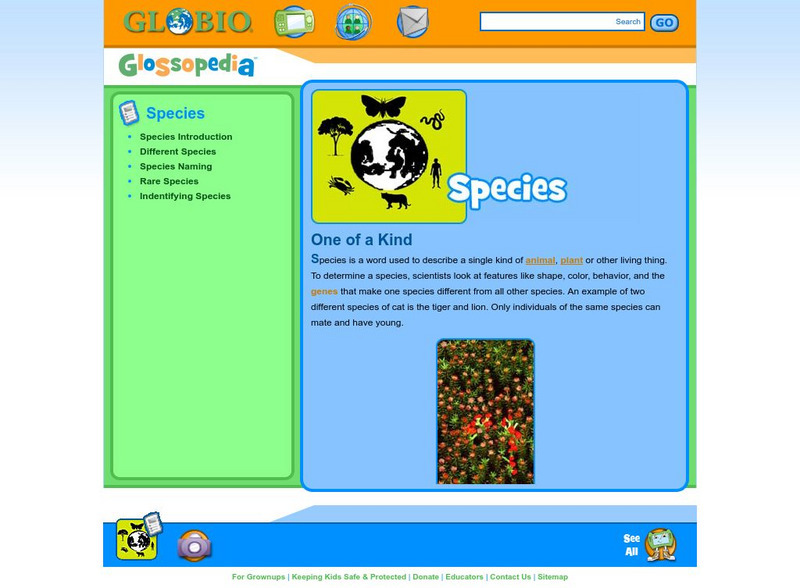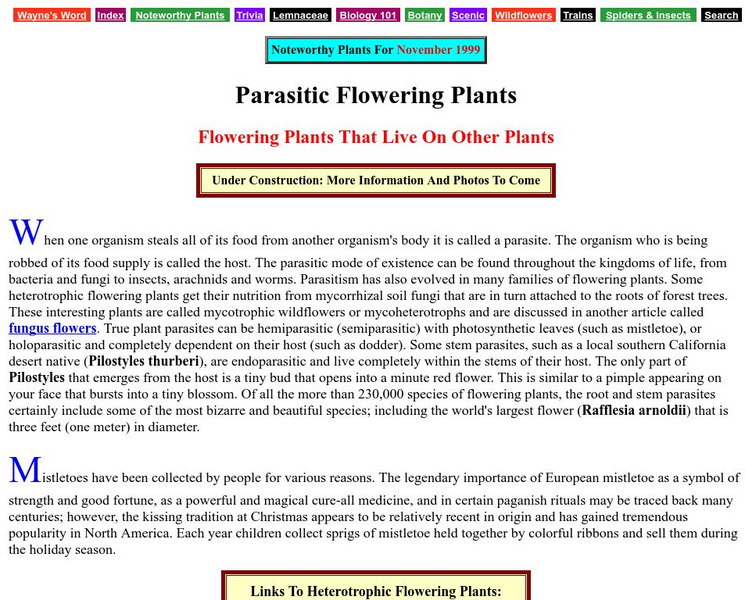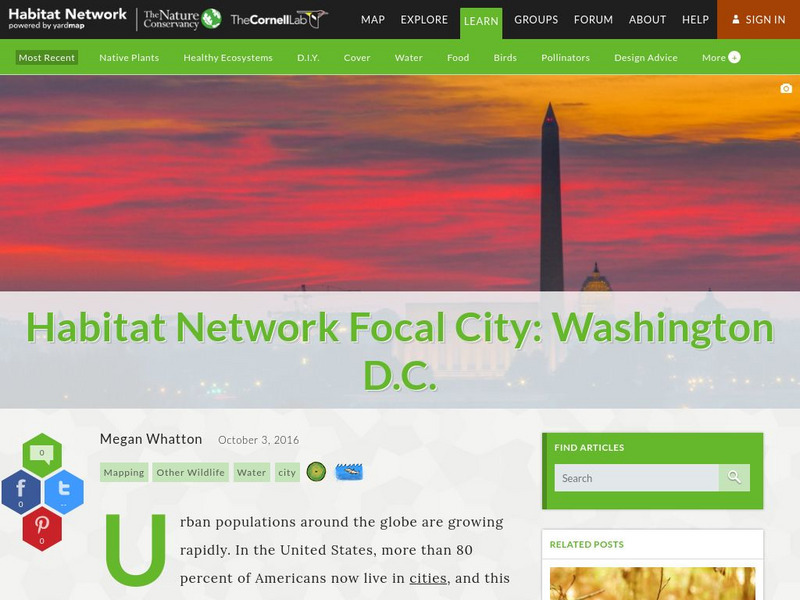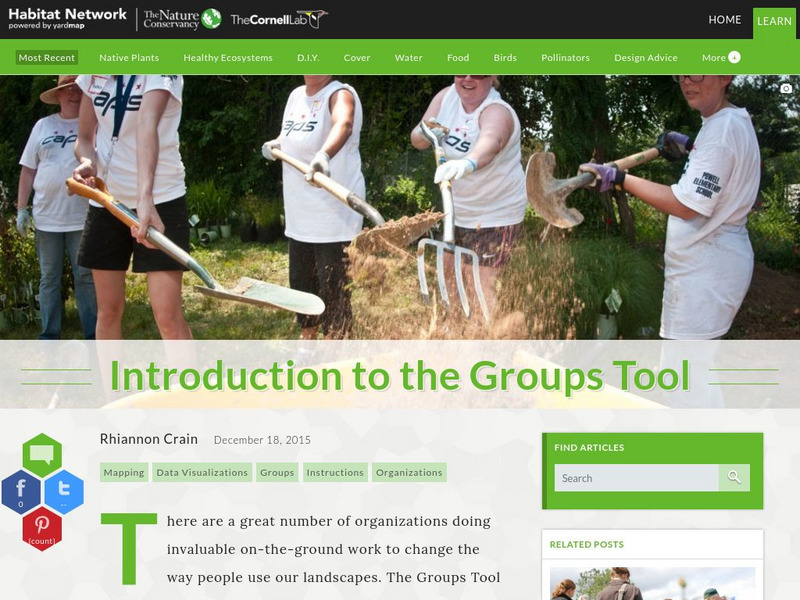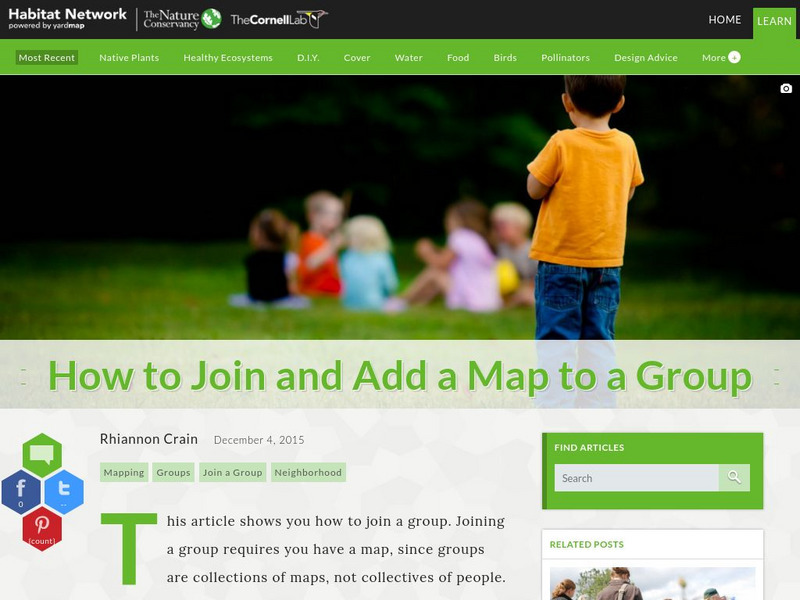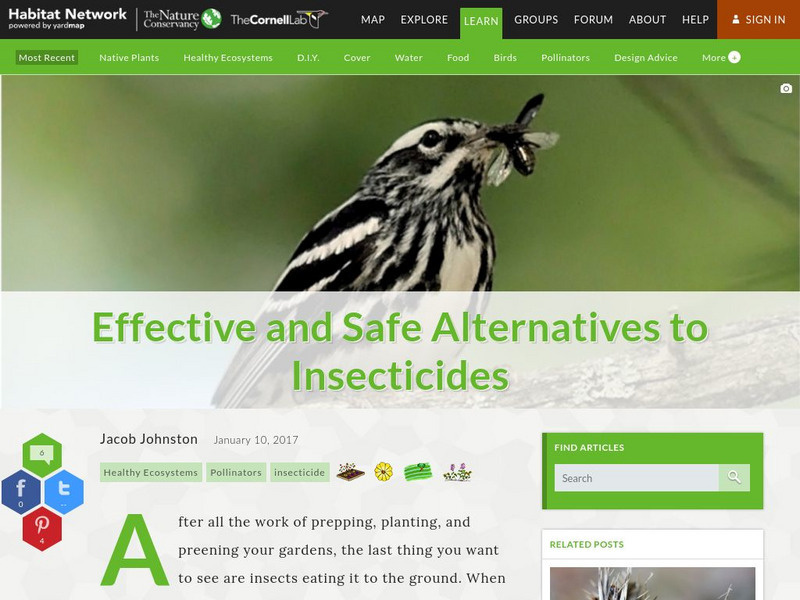Globio
Glossopedia: Species
A species is defined as a single kind of animal, plant or creature. Examples of different species are given and how the many species that exist relate to biodiversity. Scientific naming conventions are introduced.
Yale University
Yale New Haven Teachers Institute: Evolution of Plants
An extensive coverage of the evolutionary history of plants. Click on a topic in the outline and you'll go to a good discussion on this material.
Annenberg Foundation
Annenberg Learner: The Habitable Planet: Unit 9: Biodiversity Decline
This is an extensive learning module on biodiversity and its decline. It looks at ways biodiversity is threatened, the possibility of another mass extinction, the causes and consequences of habitat loss, factors that drive biodiversity...
Other
Cartage.org: Nonvascular Plants and Nonseed Vascular Plants
This detailed resource focuses on tracheophytes, psilophytes pslophytes, lycophytes, equisetophytes, and ferns. Charts, drawings, and pictures supplement the text.
Huntington Library
Huntington Library: Learning From Leaves: From Observation to Inference [Pdf]
A lesson plan in which students explore plants from three different ecosystems and make inferences about plant structures and their environments. Includes discussion questions, a vocabulary glossary, and handouts.
Utah STEM Foundation
Utah Stem Action Center: Backyard Organisms
Utah is a beautiful state with a rich and diverse population of living creatures. This activity challenges you to spend a few minutes outside thinking about and observing the organisms living in your backyard.
A-Z Animals
A Z Animals: Reference: Habitats: Rainforest
Find out about the plant and animal interactions within the rainforest ecosystem.
Other
Nrdc: Are the Effects of Global Warming Really That Bad?
The problems of global warming are examined from the following perspectives: climate pattern changes, health effects, and ecosystem disruption. You will also find a number of NRDC related webpages further amplifying the topic of global...
Cornell Lab of Ornithology
Habitat Network: Ecological, Practical, Aesthetic Advantages of Wild Shorelines
Habitat Network examines what we know about the ecological functioning of shorelines, and makes recommendations for design, planting, and management of these specialized zones.
Palomar Community College District
Palomar College: Parasitic Flowering Plants
The ecology and natural history of plants that live at the expense of other organisms is described in detail at this site from the Palomar College. Great material for a report or presentation.
University of California
University of California, Berkeley: Cal Photos: Plants
Need a photo for a project, report, multimedia presentation on plants from around the world as well as California? Find fair use images of specific plants by searching with the scientific name, common name, or location.
Cornell Lab of Ornithology
Habitat Network: Habitat Network Focal City: Washington d.c.
See how this Northeastern city's habitat has developed and changed throughout its history.
Cornell Lab of Ornithology
Habitat Network: Announcing: Photo Upload
Learn about direct photo upload to the Habitat Network crowdsourcing citizen science website.
Cornell Lab of Ornithology
Habitat Network: Introduction to the Groups Tool
Habitat Network introduces the Groups Tool that helps connect citizen scientists across the country.
Cornell Lab of Ornithology
Habitat Network: How to Join and Add a Map to a Group
Find out how to join a group for the citizen science project, Yardmap by Habitat Network.
Cornell Lab of Ornithology
Habitat Network: Snags: Nature's Apartment Complexes
Find out why the sometimes hazardous or untidy dead trees are actually quite important to wildlife.
Science Education Resource Center at Carleton College
Serc: Investigating Simple Plants
Young scholars will gather moss from the schoolyard, and observe it carefully, documenting their observations in their science notebooks. They will develop an investigable question from their observations, design and run an investigation...
Cornell Lab of Ornithology
Habitat Network: Ozark Trials: Design Challenge
Design Challenge takes photos of tricky spots in people's yards, like this one in Arkansas, and puts them out there for advice from the professionals at the Cornell Lab of Ornithology.
Climate Literacy
Clean: Temperature and Precipitation as Limiting Factors in Ecosystems
Learners correlate graphs of vegetation vigor with those of temperature and precipitation data for four diverse ecosystems, ranging from those near the equator to the poles, to determine which climatic factor is limiting growth.
CK-12 Foundation
Ck 12: Biology: Bioterrorism
[Free Registration/Login may be required to access all resource tools.] Describes how bioterrorism threatens human health.
CK-12 Foundation
Ck 12: Biology: Bird Ecology
[Free Registration/Login may be required to access all resource tools.] Discusses the diversity of bird habitats and food sources.
CK-12 Foundation
Ck 12: Biology: Nonvascular Plants
[Free Registration/Login may be required to access all resource tools.] Covers modern nonvascular plants.
Cornell Lab of Ornithology
Habitat Network: Effective and Safe Alternatives to Insecticides
The Habitat Network discusses the effective and safe alternatives to common pest treatments.
Other popular searches
- Plant Diversity Activities
- Plant Diversity Map
- Genetics and Plant Diversity
- Plant Diversity Section 22.2
- Plant Diversity Section 222
- Plant Diversity Worksheet


